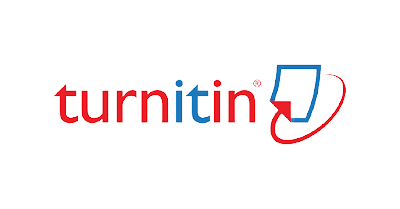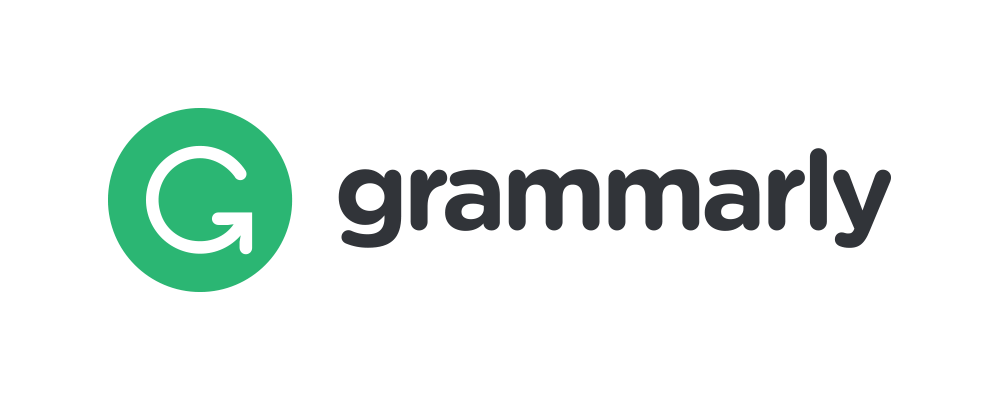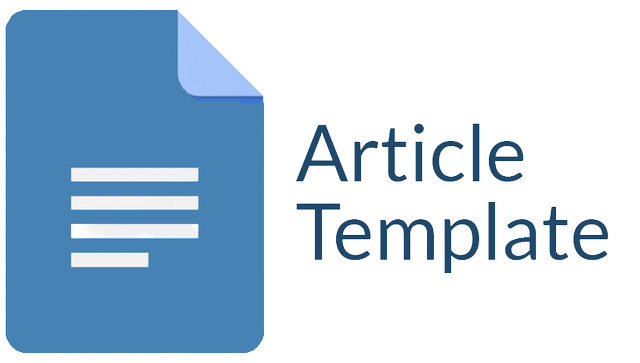TINJAUAN IMPLEMENTASI TEORI PERENCANAAN DALAM PENYUSUNAN DOKUMEN STRATEGI SANITASI KABUPATEN BENER MERIAH
Abstract
The Regency Sanitation Strategy (RSS) document represents the government's initiative to address the consequences of market failure resulting from insufficient sanitation services, that lead to environmental pollution and a decline in public health. This failure has hindered the attainment of the universal access target (100-0-100), characterized by shortcomings in environmental quality, health, and community welfare in Bener Meriah Regency. This study aims to assess the application of planning theory in formulating RSS documents in Bener Meriah Regency. The research employed methods such as document review, interviews, stakeholder mapping, and qualitative descriptive analysis of interview findings. The outcomes include identifying stakeholders, planning approaches, the role of planners, and uncovering weaknesses and ethical issues in the planning process. Conclusions drawn from the discussion are: 1) Six key actors are involved in preparing the RSS document; 2) Various approaches, including mixed scanning, comprehensive rationale, advocacy planning, and collaborative planning, are employed in the RSS preparation process in Bener Meriah; 3) All planning roles play a part in the RSS preparation process; and 4) Weaknesses in the document preparation process encompass inadequate data quality, unrealistic aspects of funding and human resources, and limited engagement of external stakeholders.
Downloads
References
Aligica, P. D. (2006). Institutional and Stakeholder Mapping: Frameworks for Policy Analysis and Institutional Change. Public Organization Review, 6(1), 79–90. https://doi.org/10.1007/s11115-006-6833-0
Allmendinger, P. (2017). Planning Theory (3rd ed.). PALGRAVE.
American Planning Association. (2023). Ethical Principles in Planning. Planning.Org.
Andhika, L. R. (2017). Public Goods Bukankah Untuk Rakyat? Jurnal Ekonomi Dan Kebijakan Publik, 8(1), 41. https://doi.org/10.22212/jekp.v8i1.697
Chong, J., Abeysuriya, K., Ross, K., Willets, J., Hidayat, L., Sulistio, H., Loekman, I., Suartana, N., Carreiro, M., & Wedahuditama, F. (2015). Penguatan Tata Kelola Sanitasi Untuk Kota Kecil di Sumatera, Indonesia.
Citrawuni, D. K., & Hanafi, I. (2015). Penerapan SSK (Strategi Sanitasi Kota) Dalam Perspektif Pembangunan Berwawasan Lingkungan (Studi pada Kota Blitar). In JAP) (Vol. 3, Issue 12).
Djafri, D. (2014). Prinsip dan Metode Analisis Risiko Kesehatan Lingkungan. Jurnal Kesehatan Masyarakat Andalas, 8(2), 100–104.
Fahham, A. M. (2019). Sanitasi dan Dampaknya bagi Kesehatan: Studi dari Pesantren. Aspirasi: Jurnal Masalah-Masalah Sosial, 10(1), 33–47. https://doi.org/10.46807/aspirasi.v10i1.1230
Fauzi, H., Svensson, G., & Rahman, A. A. (2010). “Triple Bottom Line” as “Sustainable Corporate Performance”: A Proposition for the Future. Sustainability, 2(5), 1345–1360. https://doi.org/10.3390/su2051345
Gilarso, T. (2004). Pengantar Ilmu Ekonomi Makro (Edisi Revisi). Kanisius.
Hendler, S. (1995). Planning Ethics (1st ed.). Routledge.
Herniwanti, H., Dewi, O., Rani, N., Yunita, J., Rahayu, E. P., Mitra, M., Kiswanto, K., & Hartono, B. (2021). Penyuluhan Sanitasi Total Berbasis Masyarakat (STBM) sebagai Support Program Kesehatan Lingkungan pada Masa Pandemi COVID-19. Jurnal Abdidas, 2(2), 435–441. https://doi.org/10.31004/abdidas.v2i2.295
IAP. (1994). Ketetapan Kongres Istimewa IAP No.5 tahun 1994 tentang Kode Etik Perencana Indonesia. IAP.
Kementerian Pekerjaan Umum dan Perumahan Rakyat. (2017). Pedoman Penyusunan dan Pemutakhiran Strategi Sanitasi Kota (SSK).
Lestari, P., Paripurno, E. T., & Nugroho, A. R. B. (2018). IMPLEMENTASI MODEL KOMUNIKASI BENCANA BERBASIS KOMUNITAS MELALUI RENCANA KONTIJENSI ERUPSI GUNUNG SINABUNG.
Lindawati, S., & Hendri, M. (2016). Penggunaan Metode Deskriptif Kualitatif Untuk Analisis Strategi Pengembangan Kepariwisataan Kota Sibolga Provinsi Sumatera Utara. Seminar Nasional APTIKOM, 833–837.
Mather, A. S. (1986). Land Use. John Wiley & Sons.
Miller, R. L., & Meiners, R. E. (2000). Teori Mikroekonomi Intermediate (H. Munandar, Ed.). Raja Grafindo Persada.
Pangestu, G. J., & Sunarya, E. (2022). Peran Strategi Rebranding Dan Brand Image Terhadap Keunggulan Bersaing Pada CV. Roughrebel Abadi Sukabumi. Management Studies and Entrepreneurship Journal (MSEJ), 3(1), 287–295.
Pichierri, A. (2016). Private/public – common: Economic goods and social orders. European Journal of Social Theory, 19(2), 264–282. https://doi.org/10.1177/1368431015600019
Puji Lestari, E. T. P., & BN, A. R. (n.d.). IMPLEMENTASI MODEL KOMUNIKASI BENCANA BERBASIS KOMUNITAS MELALUI RENCANA KONTIJENSI ERUPSI GUNUNG SINABUNG. Prosiding, 357.
Purwoko, S. (2018, February). Indikator Air Layak Minum dan Sanitasi Layakdalam Mendukung Upaya Kesehatan Lingkungan di Rumah Tinggal. Prosiding Seminar Nasional Germas 2018.
Ramadhani, F. (2016). Strategi Sanitasi Pemerintah Kota Pekanbaru di Kecamatan Tampan Tahun 2015. Jurnal Online Mahasiswa FISIP, 3(2).
Rasyidah, U. M. (2019). Diare Sebagai Konsekuensi Buruknya Sanitasi Lingkungan. Keluwih: Jurnal Kesehatan Dan Kedokteran, 1(1), 31–36.
Reed, M. S., Graves, A., Dandy, N., Posthumus, H., Hubacek, K., Morris, J., Prell, C., Quinn, C. H., & Stringer, L. C. (2009). Who’s in and why? A typology of stakeholder analysis methods for natural resource management. Journal of Environmental Management, 90(5), 1933–1949. https://doi.org/10.1016/j.jenvman.2009.01.001
Rizani, M. D., & Rahayu, T. I. (2021). Peningkatan Kapasitas Berjenjang Terhadap Pemerintah Daerah Dalam Pengelolaan Sanitasi Permukiman. Bengawan: Jurnal Pengabdian Masyarakat, 1(1).
Sandy, O. F. (2020). Jurnal Ilmiah Administrasi Publik ( JIAP ) Analisis Peran Aktor dalam Implementasi Kebijakan Pembangunan Sanitasi. Jurnal Ilmiah Administrasi Publik, 6(3), 415–422.
UNICEF Indonesia. (2022). Laporan Tahunan Indonesia 2022. UNICEF Laporan Tahunan Indonesia 2022, 6.
Copyright (c) 2024 Jonathan Badawi Wempi Suek, Inggar Rayi Arbani, Andhyka Putra Arie Gayo

This work is licensed under a Creative Commons Attribution-ShareAlike 4.0 International License.
Jurnal allows anyone to compose, correct, and do derivative works, even for commercial purposes, as long as they credit for the original work. This license is the freest. It is recommended for maximum distribution and use of licensed material.
The submitted paper is assumed not to contain any proprietary materials that are not protected by patent rights or patent applications; The responsibility for technical content and protection of proprietary materials rests with the authors and their organizations and not the responsibility of journal or its editorial staff. The primary (first/appropriate) author is responsible for ensuring that the article has been viewed and approved by all other authors. The author's responsibility is to obtain all necessary copyright waivers to use any copyrighted material in the manuscript before submission.
Jurnal Pendidikan, Sains dan Teknologi allows the author(s) to hold the copyright without restrictions and allow the author(s) to retain publishing rights without restrictions. Jurnal Pendidikan, Sains dan Teknologi CC-BY-SA or an equivalent license as the optimal license for the publication, distribution, use, and reuse of scholarly work. Jurnal Pendidikan, Sains dan Teknologi allows the author(s) to hold the copyright without restrictions and allow the author(s) to retain publishing rights without restrictions. Jurnal Pendidikan, Sains dan Teknologi CC-BY-SA or an equivalent license as the optimal license for the publication, distribution, use, and reuse of scholarly work.
In developing strategy and setting priorities Jurnal Pendidikan, Sains dan Teknologi recognize that free access is better than priced access, libre access is better than free access, and libre under CC-BY-SA or the equivalent is better than libre under more restrictive open licenses. We should achieve what we can when we can. We should not delay achieving free in order to achieve libre, and we should not stop with free when we can achieve libre.
Jurnal Pendidikan, Sains dan Teknologi is licensed under a Creative Commons Attribution-ShareAlike 4.0 International License.
You are free to:
- Share a copy and redistribute the material in any medium or format
- Adapt a remix, transform, and build upon the material for any purpose, even commercially.
- The licensor cannot revoke these freedoms as long as you follow the license terms.






